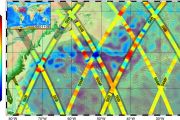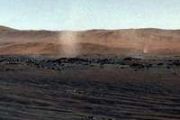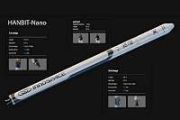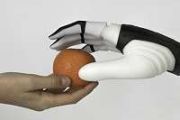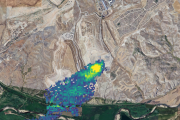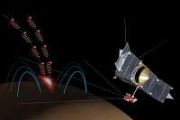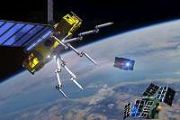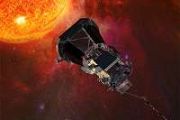
Copernical Team
Advances in quantum emitters mark progress toward a quantum internet
 The prospect of a quantum internet, connecting quantum computers and capable of highly secure data transmission, is enticing, but making it poses a formidable challenge. Transporting quantum information requires working with individual photons rather than the light sources used in conventional fiber optic networks.
To produce and manipulate individual photons, scientists are turning to qua
The prospect of a quantum internet, connecting quantum computers and capable of highly secure data transmission, is enticing, but making it poses a formidable challenge. Transporting quantum information requires working with individual photons rather than the light sources used in conventional fiber optic networks.
To produce and manipulate individual photons, scientists are turning to qua York establishes comms with final delivery on Tranche 0 Program
 York Space Systems (York), the Denver-based aerospace company dedicated to the rapid deployment of complete space mission solutions, is reporting successful contact with its final spacecraft delivered in-orbit for the Tranche 0 (T0) Transport program, delivered as part of the Space Development Agency's (SDA) Proliferated Warfighter Space Architecture (PWSA). The satellites were launched on a Spa
York Space Systems (York), the Denver-based aerospace company dedicated to the rapid deployment of complete space mission solutions, is reporting successful contact with its final spacecraft delivered in-orbit for the Tranche 0 (T0) Transport program, delivered as part of the Space Development Agency's (SDA) Proliferated Warfighter Space Architecture (PWSA). The satellites were launched on a Spa SpaceX launches new batch of Space Defense Agency missile tracking satellites
 SpaceX on Saturday successfully launched a Falcon 9 rocket carrying the Space Development Agency's newest batch of tiny missile defense satellites from Vandenberg Space Force Base in California.
The launch vehicle lifted off at 10:26 a.m. from Vandenberg's Space Launch Complex 4E before separating from the rest of the launch platform and landing back at Vandenberg about 7.5 minutes afte
SpaceX on Saturday successfully launched a Falcon 9 rocket carrying the Space Development Agency's newest batch of tiny missile defense satellites from Vandenberg Space Force Base in California.
The launch vehicle lifted off at 10:26 a.m. from Vandenberg's Space Launch Complex 4E before separating from the rest of the launch platform and landing back at Vandenberg about 7.5 minutes afte SatixFy announces strategic $60M transaction with MDA
 SatixFy Communications Ltd. (NYSE AMERICAN: SATX) reports a $60 million transaction with MDA Ltd. (TSX: MDA), a leading provider of advanced technology and services to the rapidly expanding global space industry. The strategic transaction establishes cooperation between the companies, to utilize SatixFy's revolutionary digital payload chip based technology to advanced digital satellite payloads,
SatixFy Communications Ltd. (NYSE AMERICAN: SATX) reports a $60 million transaction with MDA Ltd. (TSX: MDA), a leading provider of advanced technology and services to the rapidly expanding global space industry. The strategic transaction establishes cooperation between the companies, to utilize SatixFy's revolutionary digital payload chip based technology to advanced digital satellite payloads, ReOrbit completes oversubscribed seed funding round
 ReOrbit, a Helsinki-based leading provider of software-enabled satellites, has completed an oversubscribed Seed funding round for US $7.4M, led by Inventure VC, along with participation from 10x Founders, existing investor Icebreaker.vc, Expansion, and Yes VC.
ReOrbit enables real-time dataflow in space and provides Earth Observation and SatCom operators with flight software, satellite pla
ReOrbit, a Helsinki-based leading provider of software-enabled satellites, has completed an oversubscribed Seed funding round for US $7.4M, led by Inventure VC, along with participation from 10x Founders, existing investor Icebreaker.vc, Expansion, and Yes VC.
ReOrbit enables real-time dataflow in space and provides Earth Observation and SatCom operators with flight software, satellite pla China solicits names for manned lunar exploration vehicles
 The China Manned Space Agency (CMSA) on Thursday began to solicit names for the new vehicles of future manned lunar exploration missions. The public is invited to suggest names for the new generation of manned spacecraft and the manned lunar lander, said the CMSA.
According to an earlier report, China plans to land its taikonauts on the moon before 2030 to carry out scientific exploration.
The China Manned Space Agency (CMSA) on Thursday began to solicit names for the new vehicles of future manned lunar exploration missions. The public is invited to suggest names for the new generation of manned spacecraft and the manned lunar lander, said the CMSA.
According to an earlier report, China plans to land its taikonauts on the moon before 2030 to carry out scientific exploration. Intuitive Machines announces $20M equity investment
 Intuitive Machines, Inc. (Nasdaq: LUNR) has entered into a definitive securities purchase agreement with a certain institutional investor for the issuance and sale of stock and warrants in exchange for a $20 million equity investment. The agreement is expected to close on September 5, 2023, subject to customary closing conditions.
Intuitive Machines intends to use the net proceeds for gene
Intuitive Machines, Inc. (Nasdaq: LUNR) has entered into a definitive securities purchase agreement with a certain institutional investor for the issuance and sale of stock and warrants in exchange for a $20 million equity investment. The agreement is expected to close on September 5, 2023, subject to customary closing conditions.
Intuitive Machines intends to use the net proceeds for gene A bigger, better space-ripple detector
 The search for space-shaking ripples in the universe just got a big boost. An MIT-led effort to build a bigger, better gravitational-wave detector will receive $9 million dollars over the next three years from the National Science Foundation. The funding infusion will support the design phase for Cosmic Explorer - a next-generation gravitational-wave observatory that is expected to pick up rippl
The search for space-shaking ripples in the universe just got a big boost. An MIT-led effort to build a bigger, better gravitational-wave detector will receive $9 million dollars over the next three years from the National Science Foundation. The funding infusion will support the design phase for Cosmic Explorer - a next-generation gravitational-wave observatory that is expected to pick up rippl Satellites detect where locust infestations begin
 Locusts can destroy grain crops and pastures, threatening people's livelihoods. In an international project, researchers from the German Aerospace Center have now developed methods to help detect locust outbreaks as early as possible and take action against them. Earth observation images acquired by satellites play a central role in this. These images enable the early detection of environmental
Locusts can destroy grain crops and pastures, threatening people's livelihoods. In an international project, researchers from the German Aerospace Center have now developed methods to help detect locust outbreaks as early as possible and take action against them. Earth observation images acquired by satellites play a central role in this. These images enable the early detection of environmental Trial by fire for the Ariane 6 upper stage
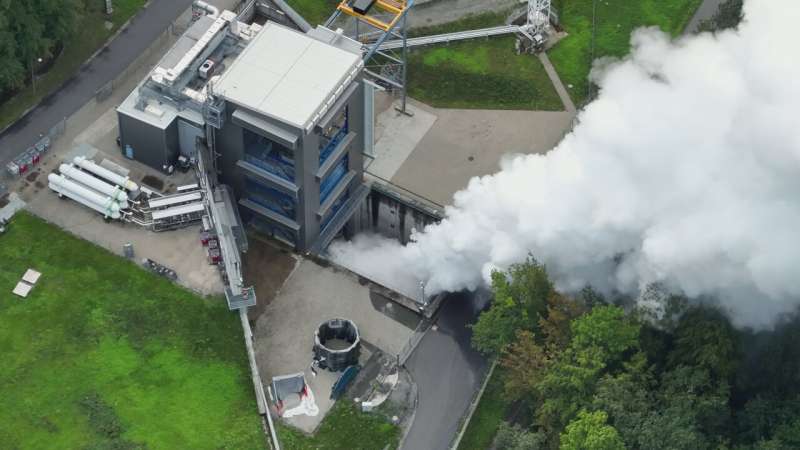
Validation testing continues for ESA's all-new Ariane 6 launch vehicle, with firing of its two upper stage engines to simulate the way they will have to operate together during a flight.
The test of the full upper stage—including the new Vinci engine and a smaller Auxiliary Power Unit (APU)—took place on a purpose-built test bench at German Aerospace Center DLR's engine test center in Lampoldshausen, Germany.



